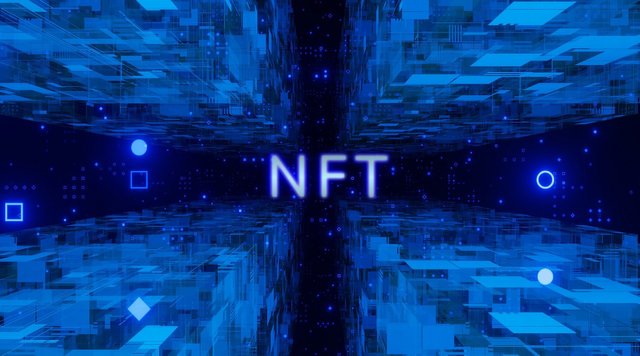
NFTs – or non-fungible tokens – are one of the most exciting new developments in blockchain and digital collectibles. They’re a special type of token that represents digital collectibles, such as digital art, fantasy card games, video games, books, or other works of digital art. Unlike fungible tokens, which represent a digital asset like an ERC-721 token or a token on the Ethereum blockchain, non-fungible tokens are not meant to represent the value of a single digital asset. Instead, they represent specific digital assets, called tokens. Think of non-fungible tokens as unique collectible cards, stamps, or paintings.
Either way, the end result is the same: NFTs are becoming one of the hottest new ways to invest in and collect digital art. But where do you start if you want to get into the world of NFTs? Read on to learn more about this exciting new area of the cryptocurrency world.
What are NFTs?

NFTs, or non-fungible tokens, are special digital tokens that represent specific digital assets, such as collectible cards in a game, a piece of art, or even digital tokens for virtual items like games or apps. You might have noticed that a few crypto exchanges now allow you to buy NFTs as a Coinbase-like service, including Ethfinex, Binance, Upbit, Coinone, and Bittrex.
NFTs are different from regular fungible tokens, which represent ownership of a certain asset like a slice of a digital pie or a share of a company. Fungible tokens are valued based on their collective value as a whole. NFTs are valued based on the individual characteristics of each token, like the specific color or edition of a painting or the characteristics of a specific digital asset, like the attributes of a virtual item.
Check out my blog: https://tinyurl.com/3sf7raer
How to Buy Non-Fungible Tokens
It’s relatively easy to buy NFTs with most major cryptocurrency exchanges. For example, if you have a Coinbase account, you can easily buy NFTs on Coinbase by adding a new cryptocurrency exchange and the trading pair. Some of the more popular exchanges that offer this service include Binance, Bitfinex, Ethfinex, Bittrex, Upbit, and Coincodex.
You can also use an exchange like Changelly to buy NFTs with major cryptocurrencies like Bitcoin, Ethereum, or Tether.
Once you have your NFTs, you can then send them to a wallet like Parity, MyEtherWallet, or imToken.
Fiverr NFT services
Fiverr is a popular website for freelance services that launched a new NFT service. You can now buy and sell specific NFTs from the Fiverr website and the company plans to enable the trading of these tokens on a blockchain platform soon.
This is a great service for buyers, who will be able to purchase specific NFTs for a virtual item that they are selling on Fiverr. It’s also a great way for sellers to monetize their work and begin lifecycle management of digital assets.
To buy Fiverr NFTs, users must first create a Fiverr account and then complete a short survey about their services, products, or goals. From there, users are free to create custom NFT tokens to represent their projects and products.
Once a project is completed or the goal is achieved, users can easily and securely sell their tokens to other Fiverr users as a liquid asset.
Check out my blog: https://tinyurl.com/3sf7raer
How to Trade Non-Fungible Tokens
Once you have some NFTs, it’s time to start trading and trading often. There are plenty of ways to trade, including selling the NFTs you purchased on a centralized exchange or selling them on a non-centralized, peer-to-peer exchange.
Liquidity is a big factor in trading NFTs, so it’s important to check the liquidity of your particular NFTs on various exchanges.
If you don’t want to put in the effort of manually trading, you might want to look into a robot trading service. Both Botangle and BlockTrading offer automated trading services to help you profit from your NFT investments.
The Downsides of NFTs
NFTs have some significant drawbacks, especially compared to mainstream investing.
For one, it’s difficult to track individual ownership of NFTs.
This makes it difficult to prove ownership of a specific item and make sure you’re receiving your NFTs if you sell a project.
It may also be difficult to liquidate or sell your NFTs. You may find yourself locked into the exchange you bought the NFTs on when getting out of the market is too risky.
Even worse, some exchanges are storing your funds on a centralized platform in a riskier way than storing your fiat funds on a centralized platform.
The Upsides of NFTs
There are some significant upsides to investing in NFTs that make this investing trend especially exciting. NFTs are easily transferrable, enabling you to easily send your investment to another person or even another person with a different
cryptocurrency account.
This is great for gifting and trading, which is one of the most common uses of cryptocurrency.
You may also find that NFTs are more liquid than other types of digital assets. Just like with traditional securities, the more liquid an investment, the more likely it is to be profitable.
Although it can sometimes be difficult to track your holdings on public ledgers, you may find that it takes less effort to track your NFTs than to track your assets on a centralized ledger like Ethereum’s.
Conclusion
Overall, non-fungible tokens represent a new way to invest in and trade digital collectibles. NFTs are uniquely valuable because they offer a liquid investment without tracking ownership or geographic location. However, NFTs can present challenges, such as the difficulty of proving ownership or selling your tokens on an exchange.